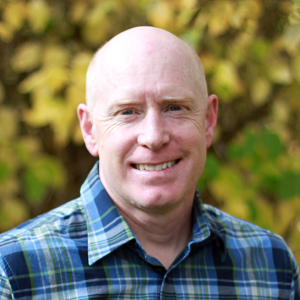FRIDAY FOCUS: To Confront the Drug Crisis, an Ounce of Prevention
University of Wyoming researcher is known as the ‘grandfather of prevention’
- Published In: Other News & Features
- Last Updated: Aug 25, 2023

Rodney A. Wambeam is a senior research scientist at the Wyoming Survey & Analysis Center at the University of Wyoming. He has been researching substance use, including drugs and alcohol, for over 25 years in some 40 states, with a focus on rural America. (Courtesy photo from the Wyoming Survey & Analysis Center)

By Ernest Beck
Special to the Wyoming Truth
For my “Word on Drugs” column published yesterday, I spoke with Rodney A. Wambeam, a senior research scientist at the Wyoming Survey & Analysis Center at the University of Wyoming, about the addiction and overdose crisis facing the state and the nation. As part of a wide-ranging discussion, we talked about Oregon’s drug decriminalization policy and its possible implications for Wyoming.
An expert in the field, Wambeam has been researching substance use, including drugs and alcohol, for over 25 years in some 40 states, with a focus on rural America. He spoke with Wyoming Truth about his work and findings and how Wyoming can better address its drug problem. What follows are excerpts from the conversation.
In our interview about Oregon’s decriminalization policy, in which those using drugs receive citations instead of being arrested, you said that the criminal justice system could play a more proactive role in confronting the drug crisis. How?
Wambeam: Giving out citations isn’t going to end the drug crisis. Getting people into treatment will help reach this goal. So if Oregon doesn’t throw people into jail and instead expands access to services, then it can work. If you do arrest people, this can also provide a pathway to treatment.
This is all-important because a vast body of evidence shows that treatment is effective?
Wambeam: We know that recovery is possible, especially if it includes peer-based counseling in which those who have been through the struggle guide others with substance use. When we interview people in recovery for meth addiction, they often say that this is one of the reasons they stay in treatment.
The reality is that addiction is problematic in our society, in terms of the crime and homelessness associated with it. This isn’t good for the substance user or communities. If you want to help people, you have to embrace rather than shun them. But sometimes this is easier said than done.
A primary focus of your work is on preventing drug use. You’re even called the “grandfather of prevention” in Wyoming. Why is prevention so important?
Wambeam: Nowadays, when people talk about drug “prevention” and other harm reduction strategies, they usually mean ensuring that Narcan — the drug that can, in most cases, reverse an opioid overdose — is widely available. I call this death prevention. We need to refocus our efforts on how substance use starts, often with drinking and nowadays vaping e-cigarettes, and preventing it. Our survey of 12th graders in Arkansas found that a large percentage of them were already drinking and vaping.
What are some other reasons young people turn to drugs?
Wambeam: They can be suffering from mental illness and trauma and can’t get help. Families are living in poverty. They learn about drugs from other family members — their mom or dad or a cousin — and think, “Oh, that’s what my family does.” There is, of course, peer pressure. Drugs are cheap, and access is easy, whether on the street or at parties. Also, there’s a lack of knowledge about the dangers and a low perception of harm.
As you mentioned, drug policies today are shifting to harm reduction amid record nationwide overdose fatalities. What else must be done in Wyoming?
Wambeam: Administering Narcan can save lives, but it’s not a solution by itself.
You have to ask, “How much Narcan has to be out there to have a real impact?” We give it to law enforcement and first responders, but if someone calls 911 and reports an overdose in progress, then it’s usually too late, especially if the drug is fentanyl. It’s the person who made the call that needs to have Narcan and know how to use it. Even if the medication is available in schools and libraries, the problem is that addiction is so often hidden—in hotels and motels and apartment buildings. Substance users don’t want anyone to know they are addicted.
What other hurdles are there in Wyoming that makes changing drug policy so problematic?
Wambeam: We’re the reddest of the red states and have different views on how the world works than, say, Oregon. We didn’t expand Medicaid so that lower-income residents could get health care. This lack of access is a big deal. If you are in crisis and can’t see a mental health professional and tell the doctor you are in pain, then you will find what you need to get by with more drugs.
Additionally, there’s the vastness of the state and the emptiness and the lack of people. And this means it’s harder to reach clinics and treatment facilities. And culturally, we are very individualistic, very John Wayne. People will say that drug use is not their problem—until it is, of course. They regard addiction as a moral failing. “It’s your fault,” they might say. “You made the mistake, so that’s your choice.”
Billions of dollars are starting to flow to states, including Wyoming, from the nationwide opioid litigation settlement. This money is earmarked for drug prevention, education and treatment. What should Wyoming do?
Wambeam: We will be awash in opioid money. As the lead agency for distributing the funds — more than $3.5 million in 2023 alone — the Wyoming Department of Health is evaluating and assessing its programs. The opioid crisis is a policy priority because so many are dying. But on the other side, it’s also related to the continuing stigma concerning addiction and drug use. When you look at response grants today, they are mostly about prevention with a small “p” and TREATMENT in all caps. Much of the settlement money should go to expanding upstream prevention.
What kind of prevention strategies do you recommend?
Wambeam: Scare tactics on billboards and public service radio spots won’t work. We have to speak to people, especially in marginalized communities, in ways they will understand. People suffering from trauma, poverty, academic failure and other risk factors that can lead to drug use. We must build prevention coalitions comprising law enforcement, mental health professionals, schools, parents and youth. Most Wyoming counties have at least one prevention coalition, running programs like Sources of Strength in schools to help prevent suicide, bullying and substance misuse. Beyond this, we must convince key stakeholders, decision-makers and elected officials that prevention, treatment and recovery can work. It will take time, but we have to start now.













